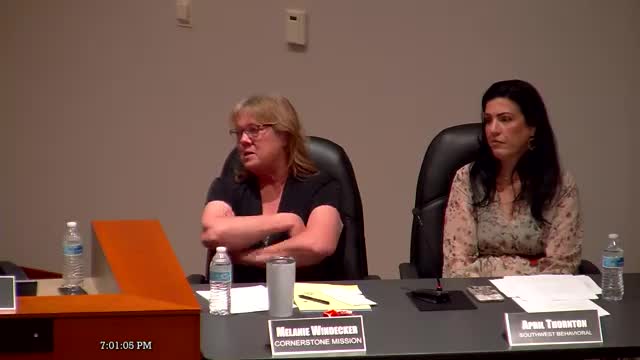Reentry program tackles digital divide for former inmates
October 08, 2024 | Kingman City, Mohave County, Arizona
This article was created by AI summarizing key points discussed. AI makes mistakes, so for full details and context, please refer to the video of the full meeting. Please report any errors so we can fix them. Report an error »

In a recent government meeting, officials discussed the critical issue of digital literacy among recently released inmates and the elderly, highlighting the challenges faced by these populations in navigating an increasingly digital world. Council members raised concerns about how technological advancements, such as the shift from flip phones to smartphones, impact the ability of former inmates to reintegrate into society. The organization Hope Lives was mentioned as a key player in providing step-by-step assistance to help individuals obtain essential identification documents and navigate digital platforms.
The conversation also touched on the broader implications of digital exclusion, particularly for the elderly, who have struggled to adapt to a world that has rapidly moved online. Officials noted that many older individuals were left behind during the COVID-19 pandemic as services transitioned to digital formats, creating barriers to accessing necessary resources.
Additionally, the meeting addressed homelessness, with statistics revealing that 921 individuals were identified as first-time homeless, with an average duration of homelessness lasting 65 days. Officials clarified that many of these individuals find stability through local support systems, including job placements and housing vouchers. Plans are underway in Mohave County to develop at least 60 housing units for seniors, reflecting ongoing efforts to address housing shortages.
The discussion also highlighted the importance of reentry programs for individuals exiting incarceration. Officials emphasized the need for comprehensive support systems that address housing, substance abuse, and mental health issues to reduce recidivism rates. Transportation assistance is being provided to help individuals access necessary services, with a focus on voluntary participation in these programs.
Overall, the meeting underscored the interconnectedness of digital literacy, housing stability, and successful reintegration into society, calling for continued collaboration among community organizations and government agencies to support vulnerable populations.
The conversation also touched on the broader implications of digital exclusion, particularly for the elderly, who have struggled to adapt to a world that has rapidly moved online. Officials noted that many older individuals were left behind during the COVID-19 pandemic as services transitioned to digital formats, creating barriers to accessing necessary resources.
Additionally, the meeting addressed homelessness, with statistics revealing that 921 individuals were identified as first-time homeless, with an average duration of homelessness lasting 65 days. Officials clarified that many of these individuals find stability through local support systems, including job placements and housing vouchers. Plans are underway in Mohave County to develop at least 60 housing units for seniors, reflecting ongoing efforts to address housing shortages.
The discussion also highlighted the importance of reentry programs for individuals exiting incarceration. Officials emphasized the need for comprehensive support systems that address housing, substance abuse, and mental health issues to reduce recidivism rates. Transportation assistance is being provided to help individuals access necessary services, with a focus on voluntary participation in these programs.
Overall, the meeting underscored the interconnectedness of digital literacy, housing stability, and successful reintegration into society, calling for continued collaboration among community organizations and government agencies to support vulnerable populations.
View full meeting
This article is based on a recent meeting—watch the full video and explore the complete transcript for deeper insights into the discussion.
View full meeting
